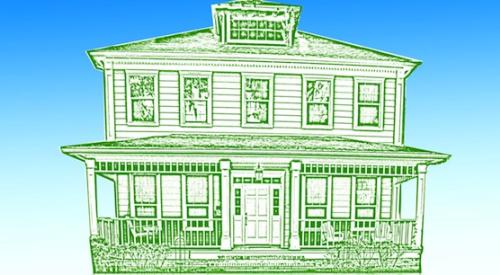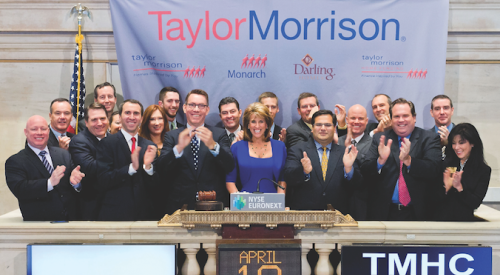|
Going public used to be a popular topic for cocktail conversation. It was once seen as a way to have your cake and eat it, too — pull your equity out of the company, but still run it and grow it larger than privately possible. Gen. William Lyon, the 83-year-old patriarch of the California housing industry, has been there and done that. His verdict: stay private!
He made his point earlier this year by winning a two-year battle to take William Lyon Homes private after 15 years as a public company. "There are positives and negatives to both public and private home building," Lyon says today. "I've seen it from both sides, and I've also taken companies public in other industries, including airlines. The advantages of being public relate to the pace of growth that's possible with access to public capital markets. But with public companies, you have senior managers who are hired guns, not really owners. They have stock options, but that's not the same as private ownership. Their decisions are driven by what effect they will have on the stock. It's a shorter-term strategic vision. It's not wrong, but it's different."
Newport Beach, Calif.-based William Lyon Homes has ranked as high as No. 6 in Professional Builder's Giant 400 (in 1991, the year it went public). From 1986 until 1999, Lyon also personally owned Presley Companies, a private California home building company he merged into the public William Lyon Homes in 1999. In the 2006 Giant 400, the company ranks No. 19 with 2005 revenues of $1.75 billion on 3,196 closings (down from 3,471 in 2004).
The company operates in California, Nevada and Arizona. In the first nine months of this year, Lyon's new home orders dropped to 1,698 from 2,861 in the same period last year, even as the firm's community count increased from 41 to 51. Lyon's cancellation rate for the three months ended Sept. 30, 2006, hit 39 percent, compared with 15 percent for that period of 2005.
|
|
"Home building is not like manufacturing," Lyon says. "It's cyclical and highly speculative. Look at the changes in home builder stock values and you can see the variability. We operate on our connections and experience. You can't pull people off Wall Street and expect them to run a home building company without those years of experience.
"You can grow faster as a public company when the market is expanding, but those stock-option-driven managers will take chances that come back to haunt a public builder when the market suddenly turns down," Lyon cautions. "It's no fun to be public in a market like the one we face today."
The Son Also RisesGen. Lyon admits the emergence of his 32-year-old son, William H. Lyon, as heir-apparent to the CEO position was a powerful factor in his family's decision to privatize the home building company. "He decided he wanted to be a builder in the sixth grade," Lyon laughs. "We started him in the business when he was 11. He trained under some of our best supers. Then he went to Stanford and got a degree in industrial engineering. I told him not to decide on a career until he got out of college. He came home at Christmas of his senior year and said he still wanted to work in the business. That was 10 years ago."
The junior Lyon is now a director, vice president and chief administrative officer of William Lyon Homes. "He's had a lot of input in the move to go private," Lyon says. "We had already persuaded one large shareholder to sell his stock to (son) Bill and me before we made our move to take the company private. That brought our holdings to 75 percent, and we had to hit 90 percent."
Wall Street's High Cost  |
Lyon says everything about operating as a listed company costs beyond reason. "The IPO cost is high, no matter what the size of the company," he says. "The investment banker fees run $2 million to $6 million, and you'll spend $1.5 million on lawyers. Then there are huge costs every year associated with operating as a public company, and some of them are more subtle than lawyers' fees and regulatory compliance. For instance, it's a distraction to constantly have to fly to New York to meet with the (stock) analysts. That has nothing to do with buying land, planning communities and building houses."
However, Lyon says the process of privatizing again proved even more costly than the IPO, especially when a British investment group, Polygon Global Opportunities Master Fund, tried to accumulate 10 percent of Lyon stock in an ultimately unsuccessful attempt to block the transaction and force Lyon to negotiate with them. All Lyon will say about it today is, "That's part of the seamy side of Wall Street, just the way it works. Going private turned out to be a huge expense. This year, we probably spent $8 million on it."
A Brighter FutureLyon admits the growth his firm achieved as a public company will help in the current downturn, but he sees definite advantages to private operations as he maneuvers toward the next boom market.
"If you look at big private builders like Shea, you see a different plan at work, and we like that model better. Our growth will be more modulated. I don't think we'll ever build more than 5,000 homes in a year. But we can mix it up with the publics. We buy land cheaper than they do in many cases. We have enough buying power to get the same price they get, on everything we buy. They want you to believe they have a purchasing advantage, but they don't — because they have huge overheads," Lyon asserts.
When the western markets come back, as they inevitably will, it will be fun to see how Lyon and Shea do against the big publics like KB Home, Lennar Corp. and D.R. Horton. (Don't bet against the General.)
| ||||||||||||||||||||













